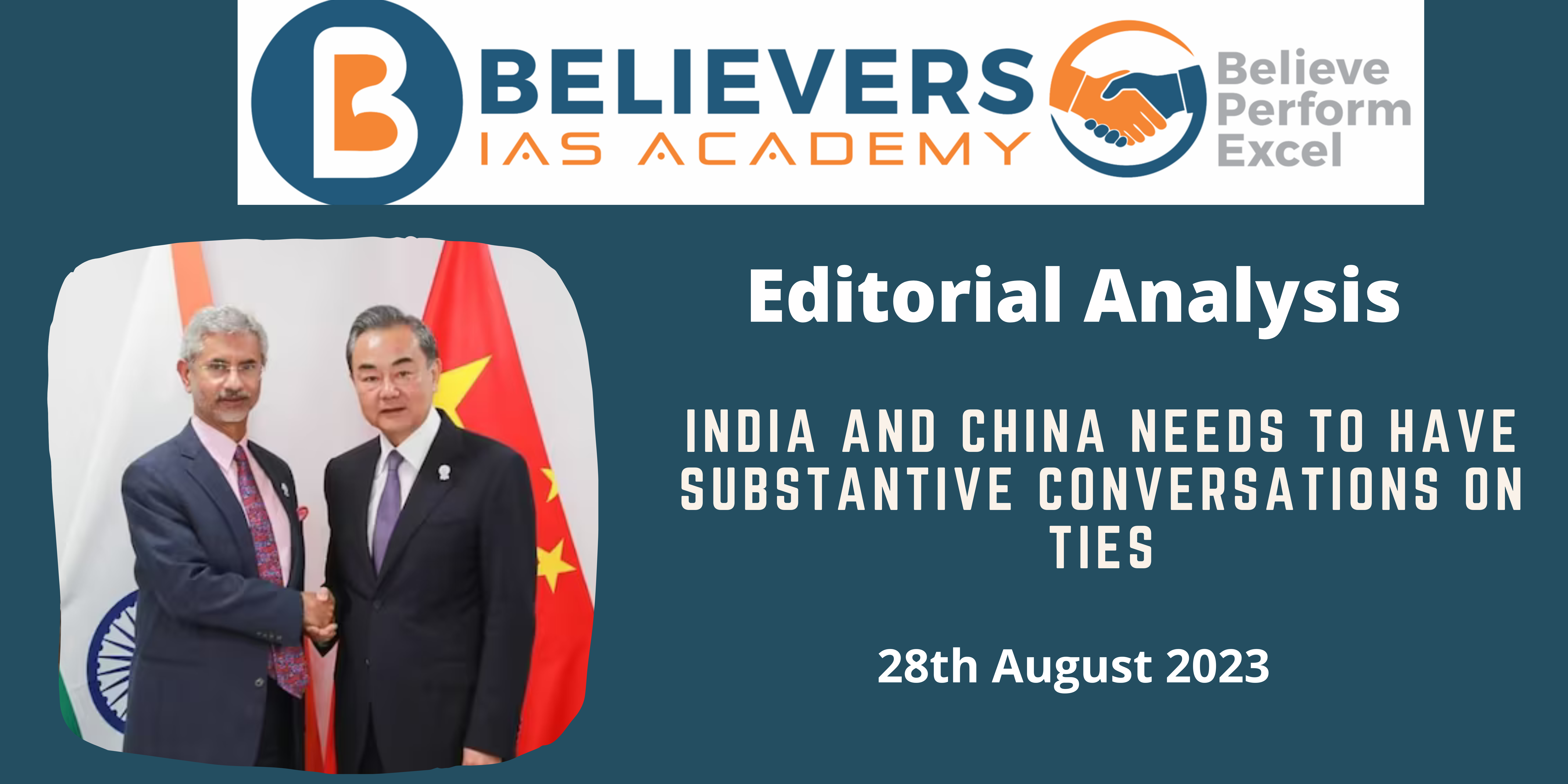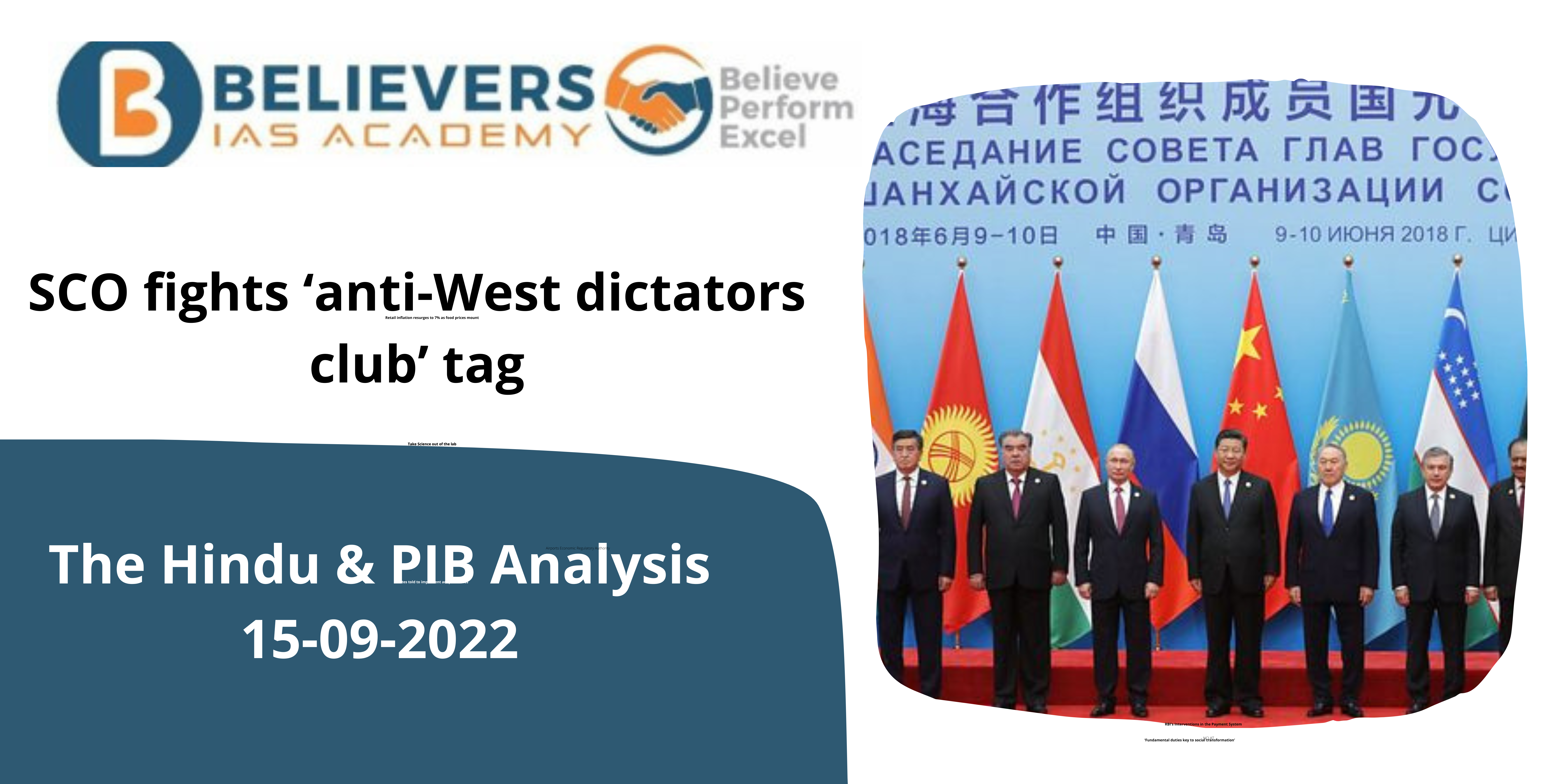India and China needs to have substantive conversations on ties
Context:
The dynamics between India and China have once again unfolded with divergent interpretations following their recent talks. The discourse between Prime Minister Narendra Modi and Chinese President Xi Jinping, occurring at the sidelines of the BRICS Summit, focused not so much on the content of their discussion, shrouded in the enigma of “informal” exchanges, but rather on the manner of their communication. This narrative delves into the nuances of this encounter, shedding light on the implications that linger beyond the diplomatic rhetoric.
Relevance:
GS-02 (Bilateral relations)
Prelims:
- Line of Actual Control (LAC)
- BRICS Summit in South Africa
Mains Question:
- Examine the evolving contours of India-China relations, considering recent interactions and the broader geopolitical context. 150 words.
Dimensions of the Article:
- Unveiling the intricacies of the conversation
- Contrasting Verbal Expressions
- Shedding light on the historical backdrop
- Highlighting the significance of content over perception
- Skillfully maneuvering through the lack of transparency for strategic aims:
Unveiling the intricacies of the conversation:
- The latest interaction between Indian and Chinese leaders occurred on the margins of the BRICS Summit in South Africa.
- The crux of the matter, however, wasn’t the actual discourse shared between Prime Minister Narendra Modi and Chinese President Xi Jinping, for such “informal” dialogues tend to shroud their content in ambiguity.
- Instead, the focus shifted to the manner in which this exchange transpired. Notably, the Ministry of External Affairs (MEA) chose to remain reticent, refraining from issuing any official statement regarding the encounter.
Contrasting Verbal Expressions:
- Foreign Secretary Vinay Kwatra did provide a glimpse into the essence of the conversation, sharing that both leaders emphasized the pivotal nature of maintaining tranquility along the border regions and respecting the Line of Actual Control (LAC) to normalize India-China relations.
- Their decision to instruct relevant officials to expedite disengagement and de-escalation further solidified this commitment. In stark contrast, the Chinese Foreign Ministry’s statement lacked these specifics. It portrayed Mr. Xi’s emphasis on safeguarding the overarching interests of bilateral relations and adeptly handling the border issue.
- The divergent articulations prompted speculation, as India’s “official sources” suggested that China had proposed a structured bilateral meeting, which India declined.
Shedding light on the historical backdrop:
- This interaction in South Africa marked only the second known engagement between the leaders since the inception of the Line of Actual Control (LAC) crisis in 2020. Remarkably, it took a span of eight months for the MEA to acknowledge that the border issue was indeed discussed during an initial conversation labeled as mere “pleasantries” exchanged at the G-20 in Bali in November 2022.
- Sources suggest that India had earlier expressed reluctance for a more formal exchange at the G-20, although video evidence indicated that Prime Minister Modi initiated the dialogue with President Xi.
Highlighting the significance of content over perception:
- If the Indian government’s reticence toward structured dialogue with President Xi stems from concerns of vulnerability to Opposition critique or dilution of its stance on complex ties with China, the contention that engaging in dialogue conveys surrender or victory to Beijing holds limited merit.
- The crux resides in the substance of the discourse itself. Indeed, a structured exchange, potentially at the upcoming G-20 summit in New Delhi, where President Xi is expected to be present, could offer Prime Minister Modi an opportunity to assert India’s position emphatically. He could reinforce, at the highest echelons, that the foundation of bilateral relations rests on peace and hinges upon China restoring the previous status quo and respecting India’s border patrolling rights.
Skillfully maneuvering through the lack of transparency for strategic aims:
- India’s apparent reluctance appears to stem from a regrettable inclination to prioritize political optics over the welfare of the nation in its dealings with China.
- This orientation has further contributed to a persisting lack of transparency regarding the evolving situation along the border. The persistent obscurity in this matter raises pertinent concerns about governmental priorities and its commitment to transparent governance.
Way Forward:
- India’s leadership must recognize the significance of forthright dialogue, transcending concerns of optics.
- The forthcoming G-20 summit could serve as an apt forum for Prime Minister Modi to assert India’s stance with resolute clarity. This could provide a platform for unequivocally conveying that the future of the India-China relationship hinges upon the restoration of border normalcy and the preservation of India’s patrolling prerogatives.
Conclusion:
The recent interaction between Prime Minister Narendra Modi and Chinese President Xi Jinping bears testament to the nuanced art of communication within diplomatic circles. The divergence in expressions underscores the multifaceted dynamics at play in India-China relations. Moving forward, the Indian government must embrace substantive dialogues that prioritize national interests over political theatrics. By fostering transparent and candid discussions, India can navigate the complexities of the region, fortifying its position and upholding the essence of diplomatic integrity.



